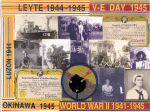NavSource Online: Mine Warfare Vessel Photo Archive
YMS-176
Nan - Yoke - Roger - Oboe
Specifications:
| Click on thumbnail for full size image |
Size | Image Description | Source | |
|---|---|---|---|---|
 |
556k | A collage of memories by Robert J. Noonan | Robert J. Noonan, F1c Crew member |
|
| Commanding Officers | ||
| 01 | LT L. H. Countryman, USNR | 1945 |
|
|
Robert Noonan
August 1994
| Naval Minewarfare Association | Association of Minemen |
| Back To The Main Photo Index | Back To the Mine Warfare Ship Photo Index | Back to the Auxiliary Motor Minesweeper (YMS) Photo Index |
| Comments, Suggestions, E-mail Webmaster |
|
This page created and maintained by Joseph M. Radigan (of blessed memory) & David Wright All Pages © 1996 - 2023, NavSource History, All rights reserved. |